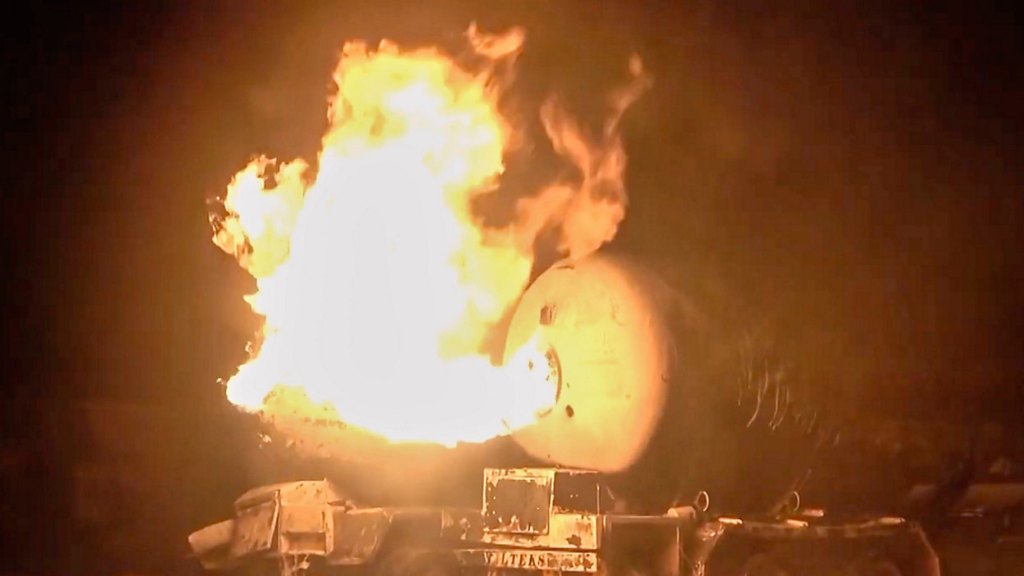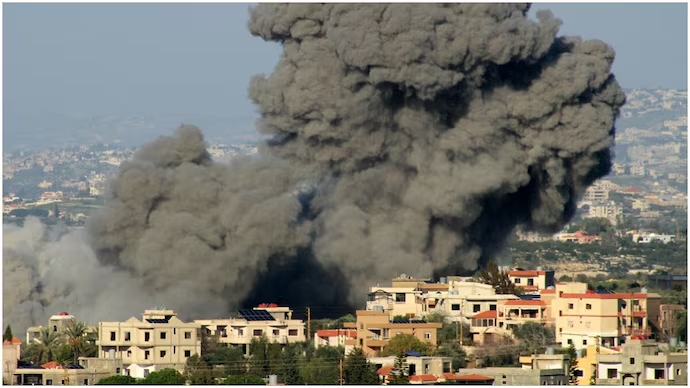U.S. Airstrikes on Houthi-Controlled Oil Port in Yemen
A series of U.S. airstrikes struck the Ras Isa oil port in Yemen, a key facility held by Iran-backed Houthi rebels. At least 38 people were killed and more than 100 injured, according to Houthi authorities.

The attack, which occurred early Friday, is one of the deadliest in a month-long U.S. military campaign.
What Happened?
U.S. Central Command (CENTCOM) confirmed the airstrikes. They said the mission aimed to disrupt Houthi funding by hitting the Ras Isa port. The facility plays a vital role in oil imports and connects to a pipeline from Marib, an energy-rich region.
Located in the Hodeidah governorate on Yemen’s Red Sea coast, Ras Isa was bombed several times. The explosions caused a large fireball visible from space, captured by NASA satellites that monitor wildfires.
Houthi-run Al-Masirah TV aired graphic footage showing rubble, burned bodies, and emergency workers at the site. According to the Houthi-controlled Hodeidah Health Office, casualties included paramedics and port workers.
A shocking claim came from Dr. Anees Alasbahi, spokesman for the Houthi-run Ministry of Health. He alleged that the U.S. used a “double-tap” strategy: an initial strike followed by another aimed at medics and rescuers. While this accusation spread widely online, the U.S. has not responded to it.
Where Did It Happen?
Ras Isa is in Hodeidah, a Houthi stronghold along Yemen’s western coast. It is one of three key coastal ports handling most of the country’s imports and aid. Its location near Kamaran Island and its connection to an oil pipeline make it a strategic asset.
The pipeline links Ras Isa to Marib, a region still controlled by Yemen’s exiled government. The Houthis ousted this government from the capital, Sanaa, in 2015. By controlling Ras Isa, the Houthis generate income from oil and fuel transactions, making it a major target for U.S. forces.
Why Did This Happen?
These strikes are part of a U.S. campaign that began on March 15, 2025. President Donald Trump’s administration launched the effort to stop Houthi attacks on commercial shipping in the Red Sea and Gulf of Aden.
Since November 2023, the Houthis have attacked over 100 ships with drones and missiles. Two vessels were sunk, and four sailors died. The group claims these attacks show solidarity with Palestinians amid Israel’s war in Gaza.

U.S. Airstrikes on Houthi-Controlled Oil Port in Yemen
The Houthis have also fired missiles at Israel and warned of renewed attacks on Israeli-linked ships if Gaza remains blockaded. The U.S. sees the group as a terrorist organization and accuses it of funding operations through fuel smuggling and extortion at ports like Ras Isa.
On April 9, the U.S. warned countries against doing business with Houthi-controlled ports. CENTCOM stated that the Ras Isa operation aimed to weaken the Houthis’ financial base. They claimed the goal was not to hurt civilians but to help free Yemen from Houthi rule. However, the large civilian toll has raised serious concerns about the strike’s precision and intent.
A Broader Conflict
This strike is not just about Yemen. It’s part of a larger power struggle in the Middle East. Iran backs the Houthis, who now have advanced weapons, disrupting one of the world’s busiest shipping routes. The U.S. says it is defending maritime freedom and global trade.
The Trump administration has linked its actions to broader efforts to pressure Iran over its nuclear activities. But the Houthis have survived years of Saudi-led and now U.S.-led air campaigns. Their grip on parts of Yemen remains firm despite the bombings.
Yemen’s civil war has already killed hundreds of thousands. Millions more face starvation. The new U.S. attacks risk worsening the crisis.
Who’s to Blame?
Blame is difficult to assign clearly. The U.S. is directly responsible for the airstrikes. If the double-tap claim is true, it could be a violation of international law. Human rights groups and some governments have expressed concern.
Still, the Houthis are not without blame. They are accused of using civilian infrastructure for military purposes. By doing so, they expose workers and residents to danger. Their repeated attacks on international shipping have drawn retaliation.
U.S. Airstrikes on Houthi-Controlled Oil Port in Yemen
Critics argue that U.S. airstrikes only fuel more violence. They point to past failures, saying military action hasn’t weakened the Houthis. Elisabeth Kendall, an expert on Yemen, has questioned the strategy. She believes the Houthis will remain resilient.
Others blame the lack of international diplomacy. Peace efforts have stalled. Without a political solution, the U.S. is left using force. But force alone seems unlikely to bring long-term peace.
What Comes Next?
The Ras Isa attack has worsened Yemen’s humanitarian crisis and raised tensions in the Red Sea. The Houthis have vowed to continue their assaults. Senior leader Mohammed Ali al-Houthi called the U.S. campaign a failure.
There are reports that anti-Houthi groups, possibly backed by the U.S. and Gulf allies, plan a ground offensive to retake key ports. If true, the conflict could grow even bloodier.
Read this:
The international community is under pressure to act. The United Nations has not yet commented on the latest airstrikes. But past U.N. reports warned about the deadly impact of foreign military actions in Yemen.
For now, ordinary Yemenis are caught in the middle. Strategic interests and regional rivalries continue to drive the war. With each new attack, the cost to human life grows.
Note: Casualty numbers vary. Houthi officials report 38 dead and 102 wounded. Other sources give lower figures. Verifying facts in conflict zones is difficult, which adds to the confusion and debate around these events.


 Trump Disappointment Over Russian Strikes
Trump Disappointment Over Russian Strikes  M&S Halts Agency Work After Major Cyberattack
M&S Halts Agency Work After Major Cyberattack  U.S. Airstrike Kills Dozens of African Migrants
U.S. Airstrike Kills Dozens of African Migrants ![An ambulance is parked at the site of the Lapu Lapu event in Vancouver [Jennifer Gauthier/Reuters]](https://worldinfo.news/wp-content/uploads/2025/04/Car-Crashes-into-Vancouver-Festival-Kills-Several-554x346.webp) Car Crashes into Vancouver Festival Kills Several
Car Crashes into Vancouver Festival Kills Several  Trump Meets Zelensky, Questions Putin’s Peace Intentions
Trump Meets Zelensky, Questions Putin’s Peace Intentions  Kashmir Tensions Rise After Attack and Border Clashes
Kashmir Tensions Rise After Attack and Border Clashes